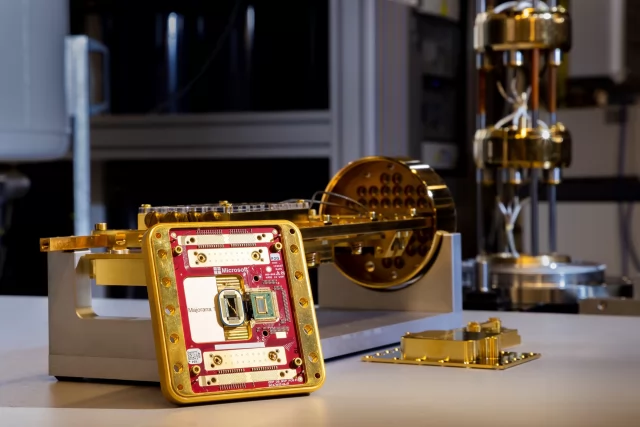Quantum computing is undergoing a revolutionary transformation, and Microsoft has recently announced a major breakthrough with the development of Majorana 1, its first quantum processor based on an innovative architecture. After nearly two decades of research, the company has unveiled a solution that could redefine the future of computing.
How Does a Quantum Computer Work?
Unlike traditional computers, which process information using bits (which can be either 0 or 1), quantum computers use qubits. Qubits leverage principles of quantum mechanics, such as superposition and entanglement, to perform computations at unprecedented speeds.
Superposition: While a classical bit can be either 0 or 1, a qubit can exist in both states simultaneously, allowing for parallel computation.
Entanglement: When two qubits are entangled, their states are correlated regardless of distance, enabling highly efficient information transfer.
A quantum chip, such as Majorana 1, is designed to manage and control these qubits. Specifically, Microsoft has developed a new type of qubit called topological qubit, which utilizes Majorana particles to ensure greater stability and lower susceptibility to errors.

What Makes Majorana 1 Special?
At the heart of Majorana 1 is a revolutionary material called topological superconductor, enabling the creation of highly stable qubits by harnessing Majorana particles. Traditional qubits are highly sensitive to external interference, making scalability challenging. However, Microsoft claims that its new technology will allow the creation of topological qubits, which are significantly more robust and reliable than existing alternatives.
According to Microsoft, this approach could support up to one million qubits on a single chip, unlocking unprecedented potential for scientific research, advanced material simulations, and even drug discovery.
The Technology Behind Majorana 1
Majorana 1 is based on a scientific breakthrough that took years to achieve: Majorana zero modes. These special quantum states, theoretically predicted by physicist Ettore Majorana in 1937, can be used to create topological qubits, which are more resistant to errors compared to standard qubits.
The topological superconductor developed by Microsoft is composed of indium arsenide and aluminum, engineered to host and control these exotic particles. Through this innovation, Microsoft aims to dramatically reduce the complexity of quantum computing and accelerate its industrial adoption.
The Implications of This Discovery
If Microsoft delivers on its promises, Majorana 1 could mark the beginning of a new era in quantum computing. Potential applications include:
Drug Discovery: Complex simulations to design new molecules and treatments.
Material Science: Development of groundbreaking materials with extraordinary properties.
Advanced Optimization: Solving complex problems in finance, logistics, and manufacturing.
Quantum Cryptography: Creating unbreakable security systems resistant to classical computing attacks.
Furthermore, Microsoft’s progress has caught the attention of DARPA, the U.S. Defense Advanced Research Projects Agency, which has selected the company to develop a prototype of a fault-tolerant quantum computer.
Skepticism and Future Challenges
Despite the excitement, some experts urge caution. Professor Vincent Mourik has emphasized the need for further experimental evidence to confirm the actual realization of functioning topological qubits. While the theory is solid, large-scale practical demonstrations remain a challenge.
With Majorana 1, Microsoft may have reached a turning point in quantum computing. If the promised results are validated, we could be just a few years away from a technological revolution that reshapes the world as we know it.
However, many questions remain: Will Microsoft be able to prove the real effectiveness of its topological qubits? How long will it take before we see a commercially viable quantum computer based on this technology?
The future of quantum computing seems closer than ever, and Majorana 1 could be the first concrete step toward a new computing paradigm.
Sources
"Microsoft announces quantum computing breakthrough with new Majorana 1 chip" - The Verge
"Satya Nadella explains why Microsoft's quantum 'breakthrough' is so important" - Business Insider
"Microsoft's Majorana 1 chip carves new path for quantum computing" - Microsoft News Center
"Microsoft unveils Majorana 1, the world's first quantum processor powered by topological qubits" - Microsoft Azure Blog
"Microsoft's New Majorana 1 Processor Could Transform Quantum Computing" - Wired
"Majorana 1" - Wikipedia








Leave a Comment